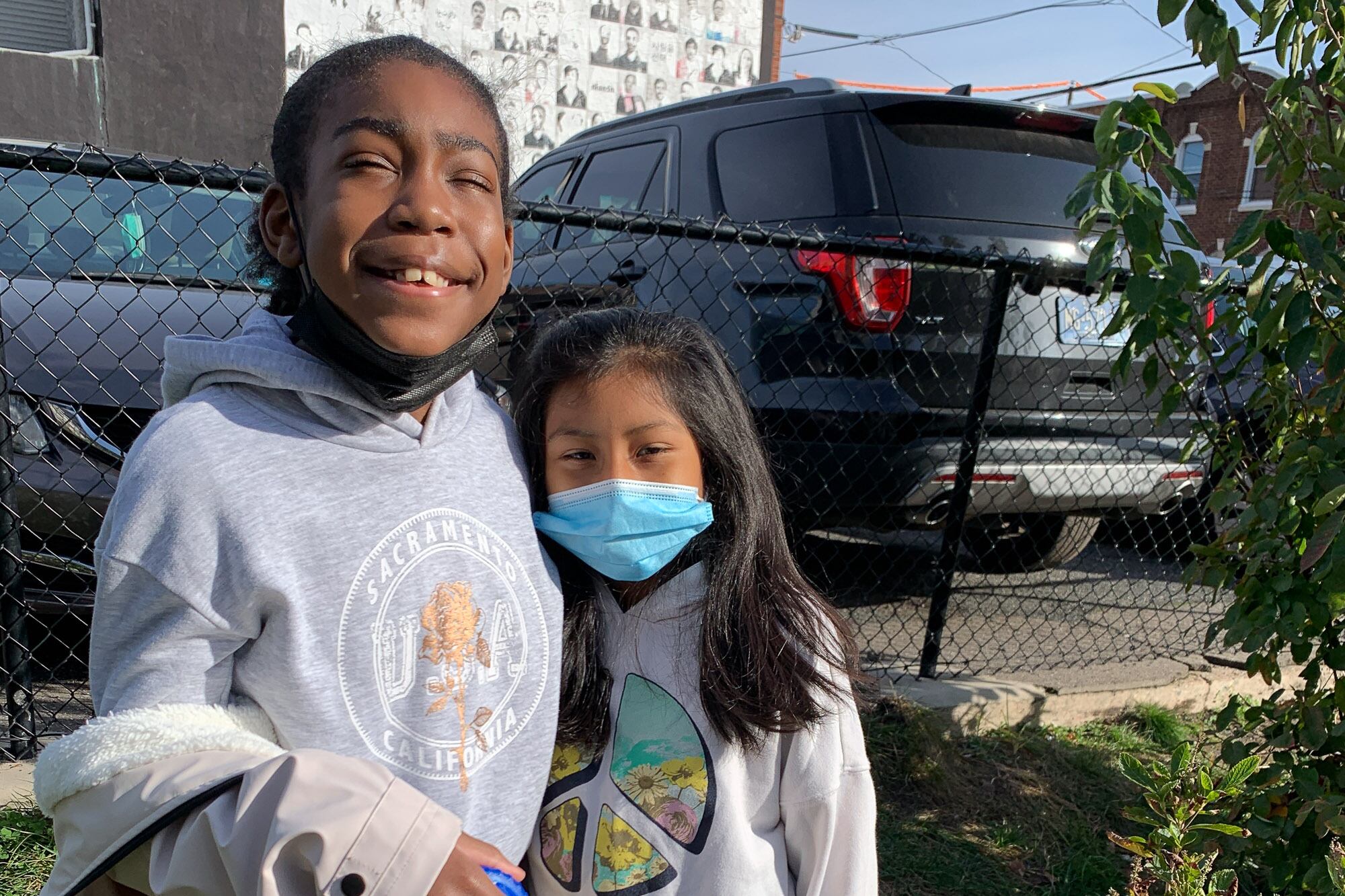Friends Uani Robinson and Jocelyn Martinez, both 9, bent over to peer at the grass and underbrush near a fence in the schoolyard of Southwark Elementary, where they are both fourth graders. They had helped plant seedlings in their school’s new combination playground and green space and wanted to show off the fruits of their labor.
The seedlings had not yet sprouted anything they could recognize, but another seed had been planted in them that educators and officials hope will grow as they get older: a mission to protect our natural world.
“We’re learning we can help our environment by taking care of our plants,” Uani explained. “It’s very important. It helps our nature and helps us have very good air and water.”
“Nature can do many things for us,” added Jocelyn. “It helps us with our food.”
The green area outside the school, in the heart of crowded South Philadelphia at Ninth and Mifflin streets, is meant to reduce stormwater runoff and reduce pollution in the Delaware and Schuylkill rivers. It is part of a 25-year city and Philadelphia Water Department initiative called Green City, Clean Waters to expand green spaces in non-residential spaces around the city. As part of the initiative, which started in 2011, the district has committed to creating green spaces on school grounds while integrating environmental awareness into the K-12 curriculum.
“As one of the largest landowners in the city, we are committed to bringing more green spaces to our schools and raising awareness about green infrastructure,” said Superintendent William Hite. “We have a mission that every student will have access to outdoor learning environments like this one that integrates stormwater management, play areas, learning areas, passive and active recreation and community resources into green spaces.”
Hite said the district now has 38 schools with green stormwater infrastructure with five more being added each year.
Philadelphia Water Commissioner Randy Hayman presented Hite and Southwark Principal Andrew Lukov with plaques recognizing the district as a “stormwater pioneer,” with special honors to 13 of the 38 schools, including Southwark, for their “exceptional commitment” to the maintenance, education and community engagement around green stormwater infrastructure. “The district’s commitment to greening schools contributes a great deal to the sustainability of our city,” said Hayman
Many of the schools receive grants from the water department to do this work.
Hayman gave a shout out to Homeroom 207 — Uani and Jocelyn’s class — for being present.
“This is a great program for you to be a part of,” he said. “As children you often look at things on the news, and they talk about climate change and environmental sustainability, but you’re dealing with it right here. You are looking at it the same way as the adults and the scientists look at it...what you’re learning now is going to make you a better citizen going forward.”
The district has also been partnering with Fairmount Water Works, which is developing a K-12 curriculum on “understanding the urban watershed.”
It is important that students learn in school that they all have a role in preserving the environment, said Ellen Schultz, director of education partnerships at the Water Works. “We want this embedded in every classroom... this is something they should experience during the school day.”
Green schoolyards like Southwark’s “allow students to learn hands-on about their watershed and green infrastructure,” she said.
Uani and Jocelyn and the other students in Room 207 are among those piloting the Water Works’ fourth and fifth grade curriculum. “They are learning that it’s really important to have safeguards to keep our water clean,” said their teacher, Joseph Ulrich. And they’re learning that they need to do something about it themselves, if they want a livable environment “when they’re my age.”
Lukov, the principal, noted that Southwark has been around for 112 years — it was built in 1909.
“For 111 years, our students did not have a playground nor green space to call their own,” he said. With the added feature that it is environmentally friendly, Lukov said, “now they do.”






